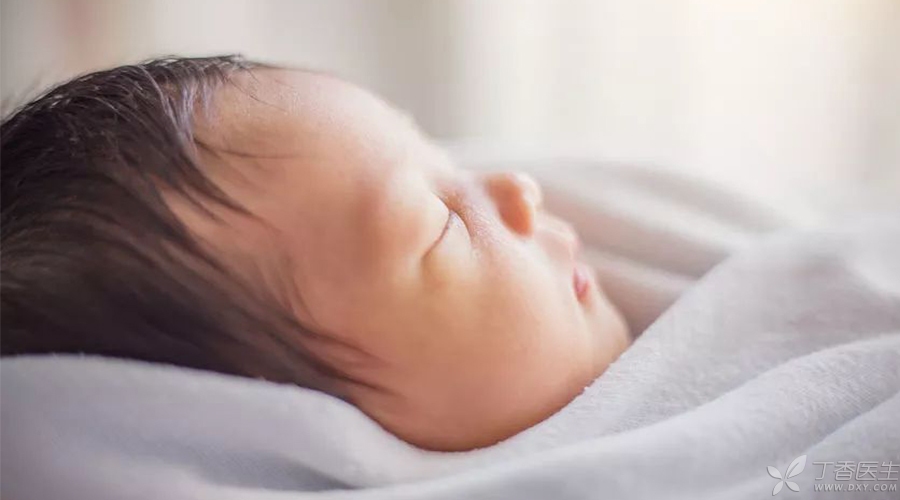
Doctor Clove has published many articles on fever, and every time he emphasizes that [the baby cannot cover his sweat with fever].
Although many parents know it, they still have doubts about how much to wear and how much to cover their children during fever.
However, in the face of the old people who are used to covering their sweat and reducing fever, it is difficult to explain it.
Today, we invited pediatrician Zhuang Ruidan to elaborate on how to wear the cover when the child has a fever. Why can’t children cover their sweat with fever? I hope I can help parents.
Fever is divided into three stages
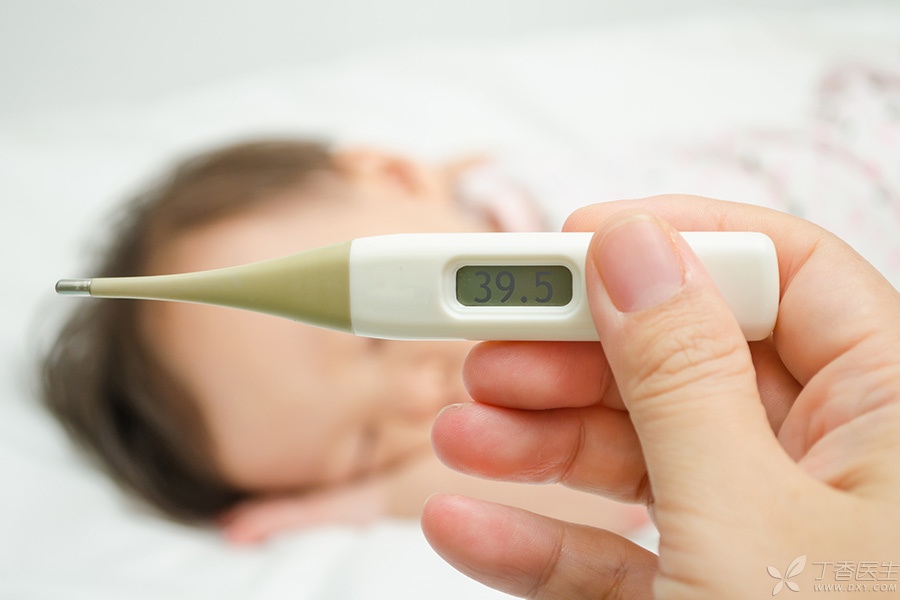
Let’s talk about the mechanism of fever first.
Many people think that fever is a process of warming up-cooling down, but in fact many people do not know that the process of fever is divided into three stages:
Stage 1: Temperature Rising Stage
The human body will generate a large amount of heat to maintain the body temperature of 39 ~ 40 ℃, and the body temperature will rise (sometimes very fast), sometimes accompanied by cold hands and feet and chills.
The second stage: duration of high fever
The chills stopped, the limbs warmed up, and the body temperature stopped rising.
The third stage: hypothermia
If the disease improves or the antipyretic is taken, the body temperature of the human body will be adjusted downward, then the excess heat will be discharged through sweating.
How to wear and cover a child with fever
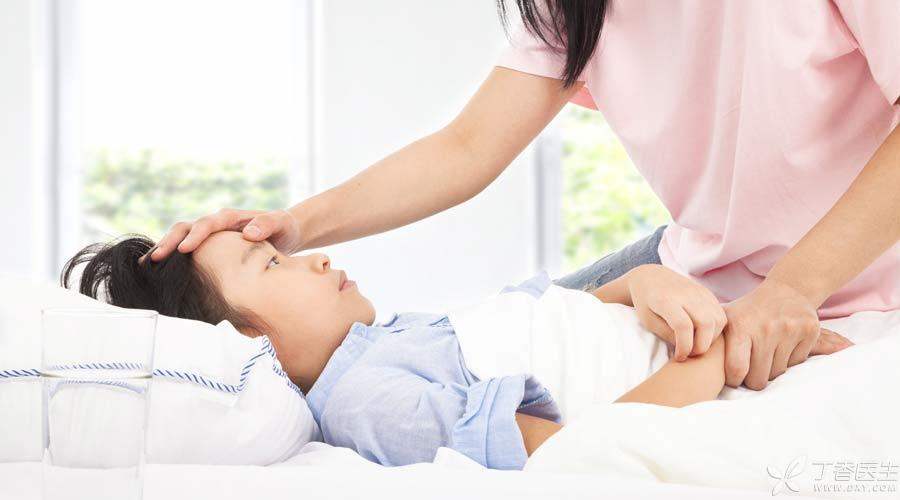
After understanding these three stages, let’s talk about how to wear and cover the children.
The rising period of body temperature: the child shivers and shivers, and the older child says [it is very cold], so he can increase his clothes and quilts until the child is comfortable.
Duration of high fever: The child does not have obvious chills and chills, but his hands and feet are icy and his body is scorching hot. All he needs to do is keep his limbs warm, such as soaking in hot water feet and putting on socks.
Temperature drop period: If the child’s temperature is stable and his hands and feet are hot, he can cover less, or maintain normal clothes, or increase heat dissipation less than usual. When sweating, he should pay attention to wiping sweat in time. If the underwear is obviously sweaty, he should also replace it in time.
Normal body temperature: Maintain normal wearing of the lid.
In short, the general principle for children to dress and cover during fever is [how comfortable the child is].
It should be noted that for babies who cannot express themselves or whose parents find it difficult to distinguish, it is even more necessary to reduce the heat dissipation of clothes and quilts when they are hot.
No matter how old the child is, never cover your sweat and reduce your fever!
Cover your sweat to reduce fever is harmful and useless, seriously endangering your life.
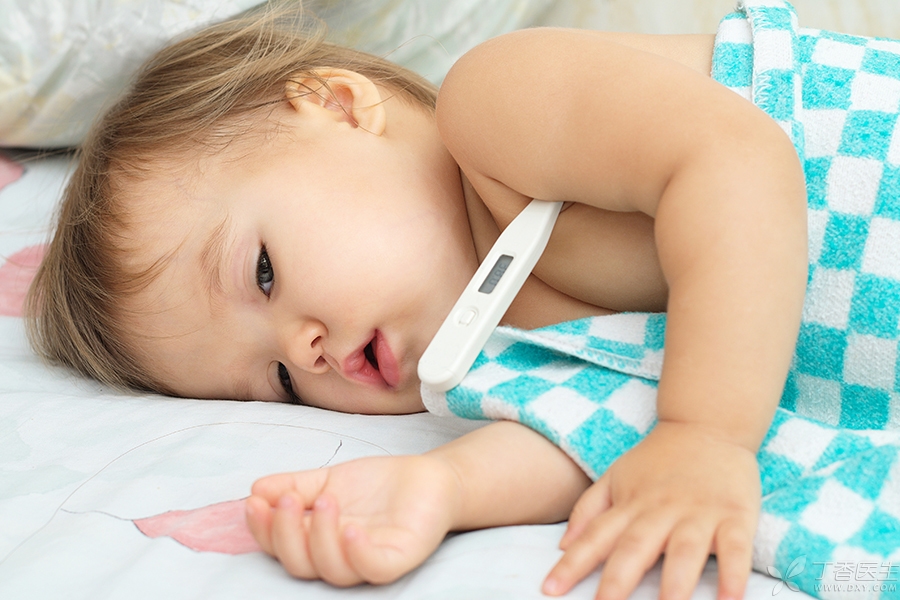
Adults rushed into the clinic with the child in their arms. The child had a fever of 40 ℃ and was wrapped up in three layers inside and three layers outside. The blanket was a down jacket, and the down jacket was taken off. There were also cotton-padded jackets, sweaters and down vests.
The child was boiling hot but did not sweat at all, and his head drooped groggily.
We felt distressed and helpless, so we quickly asked parents to take off some clothes for their children first, and then use antipyretics to wait. Those who can drink water should drink as much water as possible, or drink more breast milk.
Children’s body temperature regulation ability is not perfect. Under the condition of covering the heat, they may not only be unable to sweat and expel heat, but also accumulate heat in the body because they cannot dissipate heat. The body temperature rises to a higher level than the set point, resulting in ultra-high heat above 41 ℃.
Some children will suffer from dehydration or [febrile convulsion] due to excessive temperature. Children under 1 year old are even more at risk of [heat-covering syndrome]-hypoxia, high fever, sweating, dehydration, convulsions, coma and respiratory and circulatory failure, and die in severe cases.
It is not uncommon for news of frequent tragedies due to fever, sweat and fever reduction.

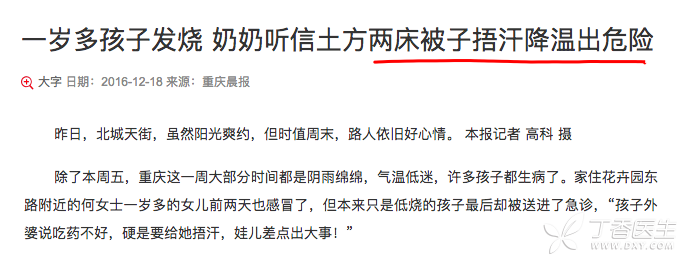
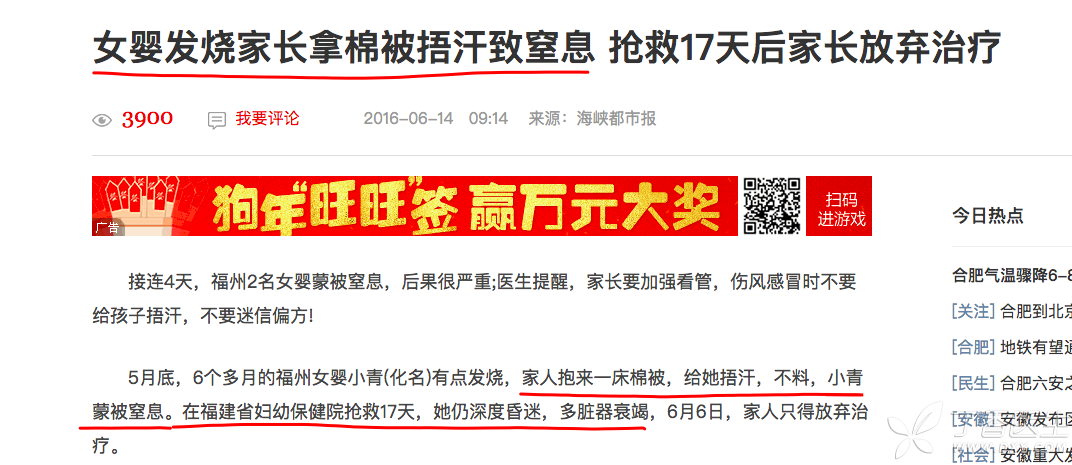
According to various clinical research data, Wu Heat Syndrome accounts for 30% ~ 65% of neonatal diseases, with a mortality rate as high as 16% ~ 21%, while the incidence rate of sequelae reaches 46%. The child’s survival may also affect his life.

Parents think that [covering sweat to reduce fever has an effect] is a mistake of putting the cart before the horse. Just like the three fever stages mentioned earlier, it is not the fever reduction caused by sweating, but the temperature drops and excess heat is discharged through sweating.
If you cover it or not, the child will naturally sweat when he sweats. If you cover it when he sweats, the child may become more seriously ill or even kill himself.
Fever is not a disease, but a symptom of the disease. Whether it is physical fever reduction or drug fever reduction, the purpose is not to cure the disease, but to make the child more comfortable.
Never use the wrong method to reduce fever in order to make the child get better quickly.
